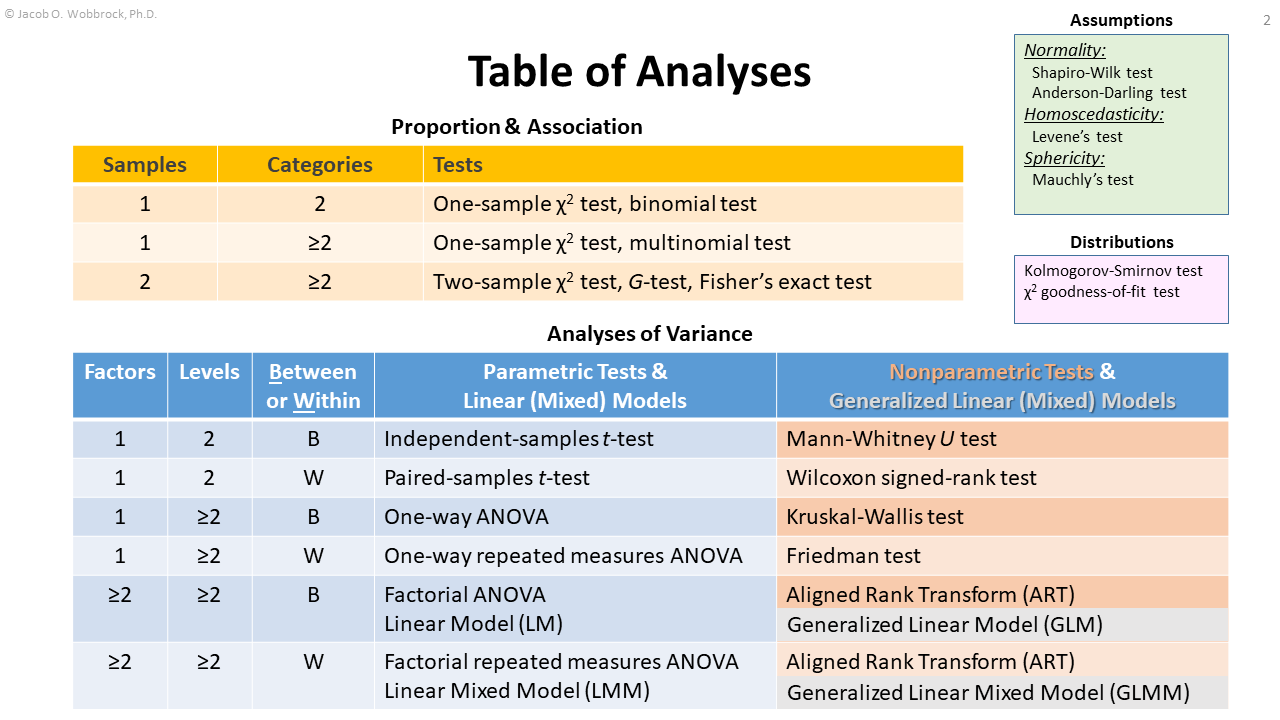Statistical Inference in R
#Rstats

Jacob O. Wobbrock
[contact]
The Information School
University of Washington
Statistical Inference in R
#Rstats

Jacob O. Wobbrock
[contact]
The Information School
University of Washington
Download
Latest Update: 19-August-2025
About
Have you ever needed to do a statistical analysis but not been sure which one to use? Or perhaps you've known the proper analysis, but not known how to translate it into R code? Statistical Inference in R, abbreviated #Rstats, provides an organized set of R code recipes for various inferential analyses, mostly applicable to experiments and surveys. These analyses are organized by whether they involve single or multiple factors, are between- or within-subjects, are for main effects, interactions, or post hoc pairwise comparisons, or are parametric or nonparametric. Tests of proportions and association, ANOVA assumptions, and data distributions are also included. Linear (mixed) models and generalized linear (mixed) models are also included.
R source code is provided that generates relevant data sets and analyzes them for significant effects. You can therefore look up your desired analysis, take the provided R code as a starting point, and change the generic variable names (e.g., X1, X2, Y, etc.) to match your own. Along with each R analysis, an English language statistical result is provided, often with a table and/or plot.
All data tables generated by the R code are in long format, with a participant identifier (PId) in the leftmost column; independent variables (factors) in the next columns (e.g., X, X1, X2, etc.); and the dependent variable (response) (Y) in the rightmost column.
Required Software Tools
Two software tools are required for running the code snippets given in Statistical Inference in R. These tools are R and RStudio. You should install R first and then RStudio.
Related Coursera Course
I have also created a Coursera course that covers much of the material here. It is taught in the R statistical programming language using the RStudio environment. The course is called Designing, Running & Analyzing Experiments.
Related Independent Study
Previously, I created an independent study called Practical Statistics for HCI, which covers inferential statistics using the SAS JMP and IBM SPSS statistics software. The independent study is similar to, and largely subsumed by, my Coursera course.
Author's Statistics Publications
Copyright © 2018-2025 Jacob O. Wobbrock. All rights reserved.
Last updated August 19, 2025.